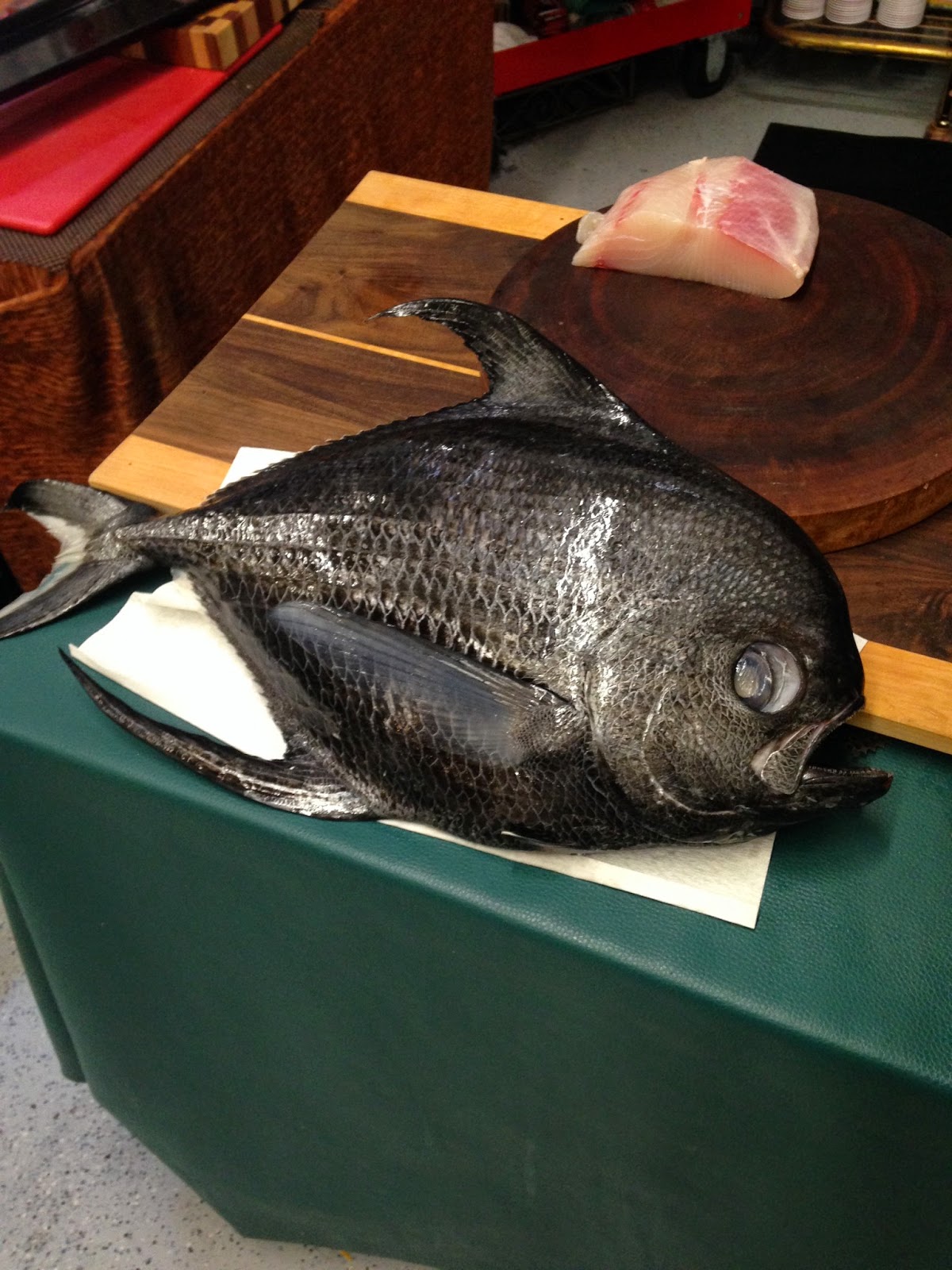Chef Sara Polczynski's Three Refreshing Mexican Dishes for Hot Weather Dining
Chef Sara Polczynski is a global traveler who digs in deep, volunteering with her young daughter and mother, most recently in Guatemala with the organization Globe Aware to help lay concrete floors in the home of a resident of the small village of El Remate. (She's also volunteered with Globe Aware in Cusco, Peru and Surin, Thailand doing various humanitarian and animal efforts.) And, of course, throughout her travels, she's picking up recipes and invaluable cooking techniques that she's taken back to San Diego, where she's the consultant executive chef at downtown's The Blind Burro restaurant and associate professor in the San Diego Community College system where she teaches baking and culinary arts classes.
I've known Sara for years. The two of us annually bake pecan pies together with other friends at Just Call Us Volunteers for Mama's Kitchen. In fact, I've really thought of her primarily as an expert baker, but as she showed me last week in her home kitchen, she's remarkably versatile--and a terrific teacher.
The three recipes she demonstrated for me below are perfect examples of coastal Mexico's influence on her--which is, of course, perfect for neighboring San Diego. The day was just as hot and steamy as today--yet she didn't break a sweat and the results were truly refreshing for lunch.
She also gave me several great tips. Most are incorporated in the recipes, but one stands out. That is to "deflame" onions that are to be eaten raw. White onions, which are typically the variety used in Mexican cooking, can be harsh in their raw state. Deflaming simply means running the diced onion under cold water for 30 seconds to eliminate the bite. You'll see this instruction in her guacamole recipe, which is actually a base for other recipes--although you can, of course, eat it plain.
So, what did she make? As I mentioned, there's guacamole, but instead of your run of the mill smashed avocado dip this is a bright and flavor-packed Mango and Shrimp Guacamole. She starts with a basic guacamole, then makes a refreshing mango salsa that, again, you can serve on its own as a sauce over proteins or to top tacos. To this combo she adds chopped shrimp that she quickly poached, cooled, then marinated with olive oil, lime juice, and sea salt.
Then there was her Moon Scallop Aguachiles Tostada. Yes, you can use any other type of scallop but moon scallops, which you can find locally at Catalina Offshore Products, are so sweet and have such a nice firm texture that they stand out in each bite. Aguachile is a puree of serrano chiles, lime juice, and salt. That's your spicy, acidic marinade for the scallops, which are then chopped and combined with cucumbers, sea salt, and cilanto, then bedded onto a crispy flat corn tortilla (you can find them at Mexican markets) smothered in smashed avocado and topped with pickled onions and cilantro.
Finally, there was her unique and cooling Shaved Baby Squash and Blossom Salad. This colorful dish is so easy to make and really takes advantage of the bounty of summer squash we're enjoying now. All you need is a mandoline or hand slicer to get long thin strips of the squash that you'll add to the delicate yellow squash blossoms, diced red pepper, and greens like arugula. Add a terrific vinaigrette and you're set--although you could also add beans, shrimp, roasted corns, beets, nuts, seeds, cheese, or berries. The squash ribbons will soften slightly as they absorb the dressing, but still have an enjoyable crunch. Yes, it's quite versatile, not to mention brilliantly colorful.
In fact, Sara says that color is one of her greatest influences in her cooking. "Why wouldn't it be?," she laughs. "It makes you happy when you eat!"
Mango and Shrimp Guacamole
from Sara Polcyznski
(printable recipe)
Yield: 2 cups
Both the salsa and the guacamole can be served separately but combine them and add shrimp and you've got a uniquely flavored dish. For the salsa, Sara says the key is a small dice to make it pretty.
Mango Salsa
1/3 red bell pepper, small dice
1 mango, small dice (Tip, to slice the mango meat from the large seed, cut off the base, peel off the skin, the set on the counter and slice down.)
1/2 green onion, minced
2 tablespoons cilantro, chopped
1/2 shallot, minced
1 tablespoon rice vinegar
Salt to taste
Mix together all of the ingredients in a bowl. Season to taste.
Plain Guacamole Base
2 pounds avocado
3/4 ounce cilantro, chopped
1 tablespoon lime juice
1 teaspoon salt
1 1/2 ounces diced white onion, deflamed (run under cold water for 30 seconds after dicing)
Lightly mash the avocado with a potato masher and blend with the remaining ingredients (keeping the mixture slightly chunky for better texture).
Shrimp
1 pound raw shrimp, deveined and with tails removed
2 tablespoons extra virgin olive oil
1 tablespoon lime juice
1/2 teaspoon sea salt
Fill a bowl with water and ice. Set aside. Bring water in a medium-size saucepan to a boil. Add the shrimp and cook briefly, just until the shrimp turn a light pink. Scoop out and place in the ice water bath to shock and stop the shrimp from cooking. Remove, drain, and loosely chop (Set several whole ones aside to garnish the dish). Then add olive oil, lime juice, and sea salt. Mix well.
When the salsa, guacamole, and shrimp are made, combine them and mix well. Plate and serve with chips.
Moon Scallop Aguachiles Tostadas
from Sara Polcyznski
(printable recipe)
Serves 8
1 1/4 cups fresh lime juice
1 to 2 teaspoons fresh serrano chiles, stemmed
1/2 teaspoon salt (or to taste)
1 pound moon scallops
1 Persian cucumber, sliced thin
3 tablespoons cilantro, minced
1 avocado, peeled, seeded, and smashed with salt and lime juice
8 flat crispy corn tostadas (available at Mexican markets)
1/4 cup pickled onions
1 cup loosely packed cilantro leaves for garnish
To prepare the moon scallop marinade, combine the lime juice, chiles, and salt in a blender and puree until smooth. Taste and adjust seasonings. Poor over the scallops and marinate for up to an hour.
Chop the scallops, and add the cucumbers, sea salt, and minced cilantro.
Top each tostada with some smashed, seasoned avocado. The add the aguachile moon scallop mixture. Top with pickled onions and cilantro.
Shaved Baby Squash and Blossom Salad
from Sara Polczynski
(printable recipe)
Yield: 1 quart
1 pound baby squash (the smaller, the sweeter), sliced thin lengthwise to better absorb the dressing
2 cups greens, like arugula
1/4 diced shallot
1/3 (or 1/4 cup) red bell pepper, small dice
Salt and pepper to taste
8 squash blossoms, stamen removed
Vinaigrette of your choice
Toss the heavy vegetables with the dressing first. Let sit so that the squash softens slightly. Add sea salt and pepper to taste.
Add greens and carefully tear apart and add the blossoms. Add more vinaigrette to taste. Marinate five to 10 minutes and serve.
Print Page









































